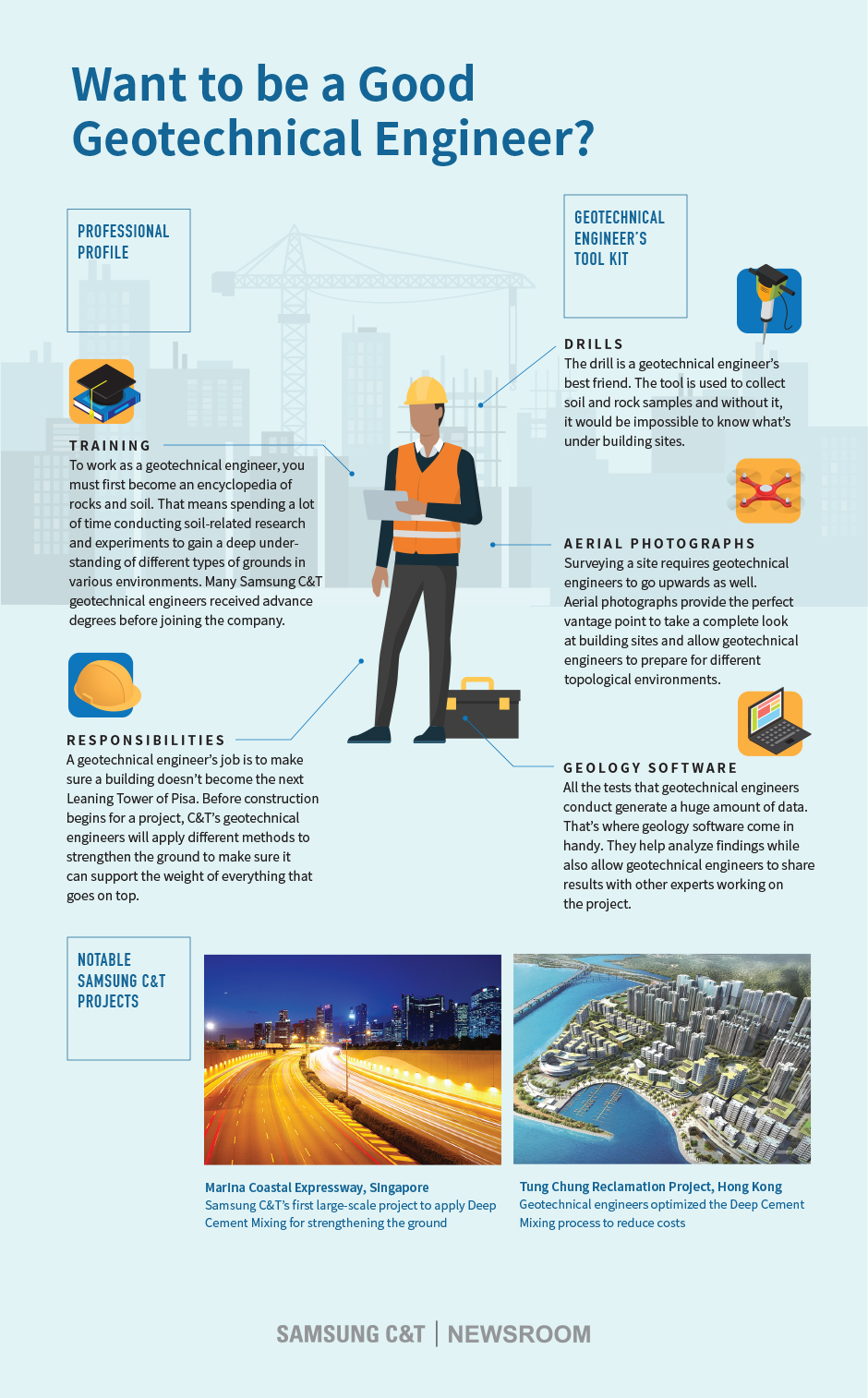The Ultimate Guide To Geotheta
Wiki Article
The Buzz on Geotheta
Table of ContentsNot known Details About Geotheta The 9-Second Trick For GeothetaNot known Facts About GeothetaThe Geotheta Diaries
They work together with civil engineers, structural engineers, designers, and various other experts to integrate geotechnical considerations into the general task layout and building procedure. This calls for efficient teamwork, coordination, and interaction to guarantee that the geotechnical aspects align with the task purposes and fulfill governing requirements.Mining & Materials Design: Principles of exploration, infiltration prices, and factors influencing the option of boring method. Qualities of nitroglycerins, shooting systems and blast patterns. Blasting strategies in surface and underground operations. Special blowing up techniques at excavation perimeters. Resonance and noise control. Mechanical and continual methods to fragmentation, including longwall shearing and fullface boring.
Modelling of fragment and bit size circulations; comminution as a transfer function. Comminution innovation: squashing, grinding, size category. Integrated evaluation of fragmentation and comminution operations. Supplied by: Mining & Materials Engineering.
Some Known Details About Geotheta
Bachelor's level programs in civil, geotechnical, geological, and environmental engineering commonly last 4 years and consist of basic education and learning courses in English, social science, and the liberal arts, along with courses in sophisticated maths, structural geology, and liquid mineralogy. (https://medium.com/@ianhammond2191/about)Geotechnical design entails the analysis of the soil and rock problems at a particular site, and their implications for the advancement of that site. As most frameworks rely upon the ground for support, it is without shock that a detailed understanding of the ground conditions, and the viability of structure systems, are vital to the long-term security and efficiency of the structure or structure.
Specialising in the examination of geological developments and ground behaviour, geotechnical engineers execute clinical examinations and testing to understand the effect these geological formations might carry the layout and building of structure, civil and framework projects. This knowledge is vital for the layout and building of buildings, roads, tunnels, dams, bridges, and supply of water and sewage systems.
The geotechnical group at Douglas Allies routinely speak with architects, layout designers, developers, and builders to make suggestions on layout and advancement proposals to guarantee that the built structures are suitably designed for the ground conditions. For instance, the style of footing systems needs to think about the weight of the structure, the capability of the ground to support that weight along with activity resistances and reliable construction.
The Geotheta Statements
This task is substantially streamlined by the use our Douglas Map geospatial system which makes this info conveniently accessible in an easy to make use of internet browser interface. A geotechnical designer will guide the exploration of boreholes and examination pits to gather dirt and various other examples, and likewise assess surface features and ground exposures to create a geotechnical model of the subsurface problems.Depending upon the job kind and ground conditions encountered, lab screening may amongst other things analyze strength, compressibility, reactivity and/or permeability of dirt and rock samples. After this information is collected and collated, the outcomes are made use of for a geotechnical model of the website, which is normally presented as areas throughout the site.

A geotechnical investigation by nature can just evaluate the ground conditions at the places pierced or dug deep into. All-natural variants in dirt and rock problems can take place across a site and between examination locations. It is for that reason great method that the geotechnical designer be preserved throughout construction of the project to provide on-site verification that the ground problems experienced are constant with the expectations and advice given in the geotechnical investigation report.
The Ultimate Guide To Geotheta
Geotechnical designers utilize their thorough understanding of soil and rock to assess danger and solve problems on varied framework projectsGeotechnical design is a specialist branch of civil engineering which takes a look at the behavior of planet products and the application of soil and rock mechanics. Tailings Engineer. As a geotechnical engineer, you will certainly examine the physical, mechanical and chemical homes of soil and rock in order to make foundations, preserving frameworks and earthworksGeotechnical engineering is very closely connected to and overlaps with, both engineering geology and ground design - http://prsync.com/geotheta/. It's possible to specialise in geotechnics or help a geotechnical firm yet be referred to as a design rock hound or a ground engineer. As a geotechnical engineer, you'll require to: develop and maintain relationships with clients and other professionals entailed in the website, throughout each projectmaintain safety standards on website be mindful of cost implications when you make recommendationsstudy geological maps and aerial pictures from a series of resources and from various time periodsexamine building plans to see how feasible they are based upon your understanding of the siteinvestigate threats or geological hazards for the sitesearch for eco sensitive functions, such as landfill beginning to establish factual and expository ground modelsplan field investigationsdrill and analyse examples of bedrock, soil, groundwater and added products oversee other specialists on sitesolve technological problems as they emerge, such as unforeseen frameworks at drill sitesmonitor conditions throughout and after construction to make certain structures are steady in the short and lengthy termadding data accumulated on website to your preliminary researchcreating geotechnical calculations, illustrations, and two or three-dimensional computer designs translating the datamaking recommendations regarding the suggested usage of the site

Report this wiki page